In 2013, Yuan Dynasty celadon ceramics surfaced in the antique market in Ho Chi Minh City. These pieces were linked to a shipwreck discovered in the sea near Binh Chau Commune in Vietnam’s central Quang Ngai Province.
 |
| Location of Binh Chau wreck |
Discovery and Excavation
Vietnamese authorities swiftly secured the site and awarded the salvage contract to Doan Anh Duong Co. More than 5,000 artifacts were recovered from the wreck. Remarkably, the wooden ship remained relatively intact despite being submerged for nearly 700 years.
The vessel, approximately 25 meters long and 5 meters wide, sank in a nearly vertical position. Its hull featured bulkhead partitions, a typical design of Chinese junks. This construction method is also seen in a 34.6-meter-long Song Dynasty ship excavated from Quanzhou Bay, China, in 1973. That ship, dated to around 1277, had 13 watertight compartments.
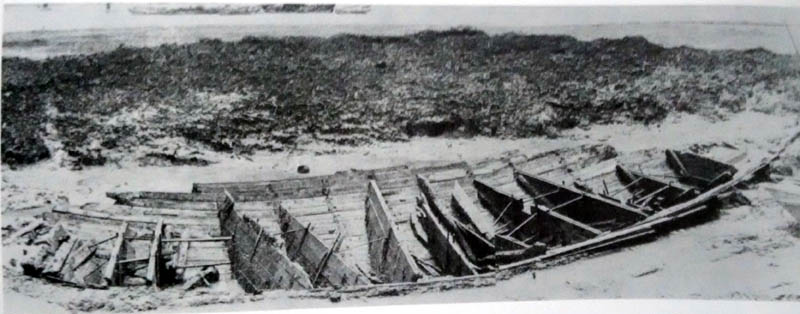
Wreck found off Quanzhou Bay
Wreck Structure and Artifacts
The Binh Chau wreck measured about 25 meters in length and had 12 compartments, where the ceramics were systematically arranged. Excavators also found personal belongings of the crew, including bronze coins and scale weights.
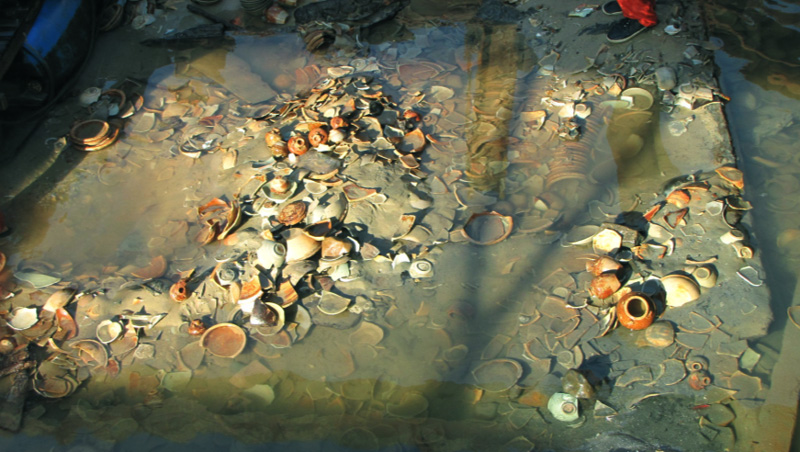
Ceramics found in one of the compartment

Some of the Ceramics recovered
Dating the Wreck
According to Dr. Nguyen Viet, Director of the Southeast Asian Prehistory Research Center, copper coins were recovered from the wreck, some bearing the inscription Zhi Yuan Tong Bao (至元通宝) from the Yuan Dynasty. These coins were minted during two Yuan reigns:
- Kublai Khan (1285–1294 AD)
- Shun Di (1335–1340 AD)
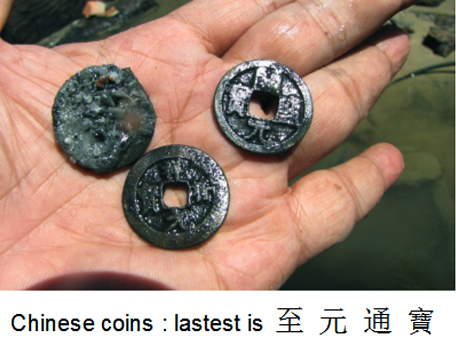
This evidence confirms that the wreck is no older than 1285 AD. However, the features and variety of ceramics suggest a more likely date between 1330 and 1350 AD. Some Yuan blue-and-white porcelain was also recovered, and archaeological evidence indicates that such wares were not produced before 1330 AD. Hence, Binh Chua wreck likely dated to around 1330s to 1350s.
Types of Chinese Ceramics Found
The ceramics from the wreck are typical of those found at ancient Southeast Asian trade sites. The primary types include:
- Longquan Celadon (Zhejiang Province)
- Fujian Brown and White Wares
- Jingdezhen Shufu White-Glazed, Qingbai Iron-Spotted, and Blue-and-White Wares
The mix of ceramics reflects the market demand of the late Yuan period. Longquan celadon wares dominated, followed by Fujian and Jingdezhen ceramics.
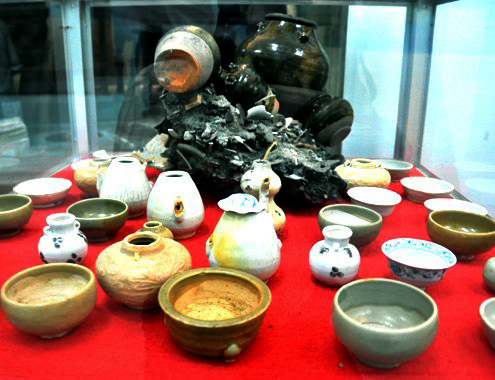 |
| Recovered ceramic wares displayed in Quang Ngai Museum |
Longquan Celadon
Compared to Song and early Yuan Longquan celadon wares, the quality of those from this wreck had declined. Some large plates even had severe manufacturing cracks. The vessels, mainly bowls and plates, were utilitarian, often featuring impressed or embossed floral motifs. Longquan censers were among the recovered items, along with jarlets, which were highly sought after in Southeast Asia.

Some examples of Longquan
big plates with dragon/floral motif
Big Longquan
celadon plate with foliated rim. Despite the firing crack, it was still
deemed suitable for export
Longquan celadon censer
Two types of foot for big plate co-existed during the late Yuan
period. The hidden foot (left) is a continuation and modification of an
earlier version and the latter with raised footring introduced in Late
Yuan became the standard during the Ming period.
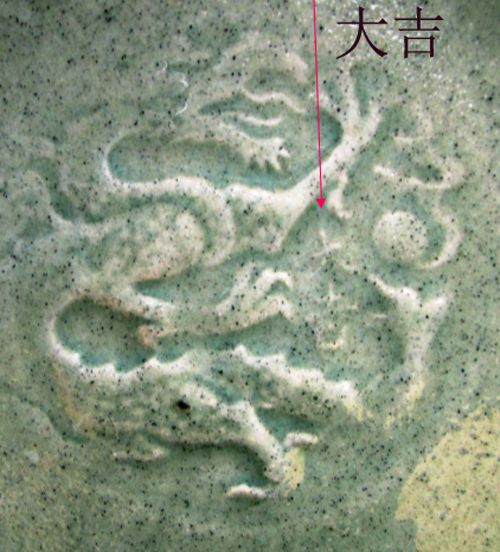
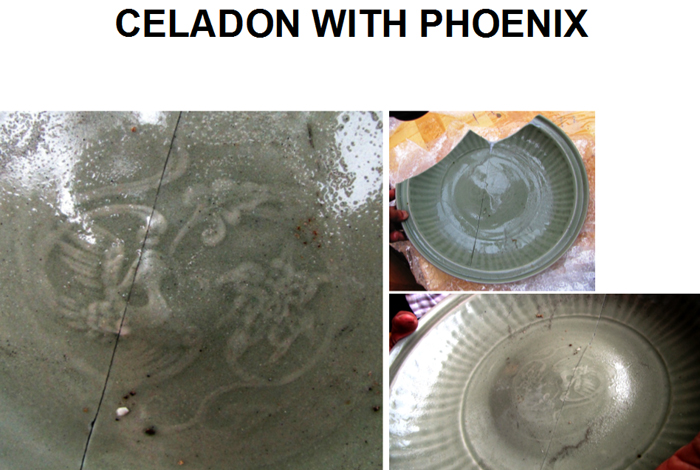
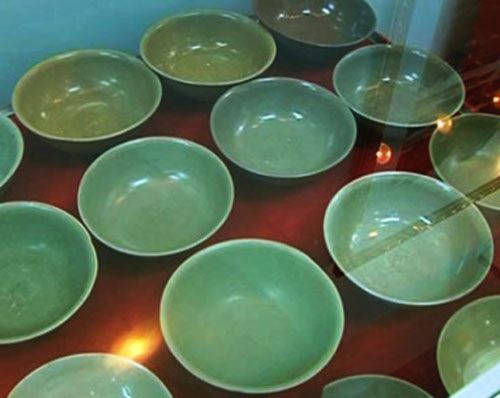
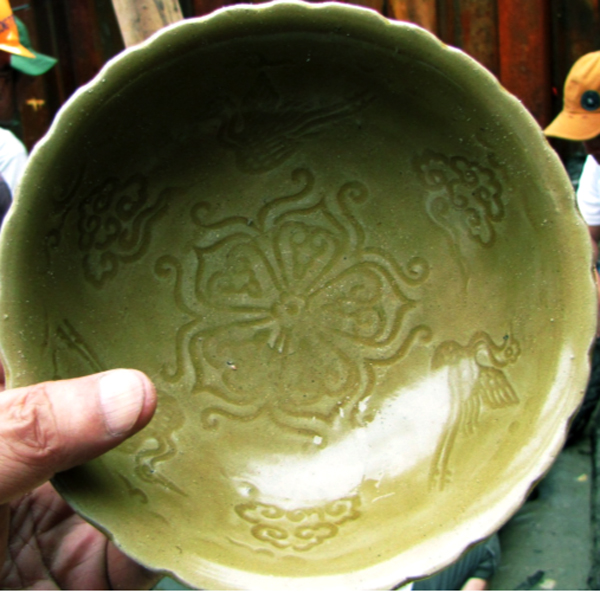
Many such bowls
with impressed floral motif were recovered
A finer piece with foliated rim and
impressed motif

Some of the bowls has impressed
floral motif and impressed Chinese Characters Qing He (清河)
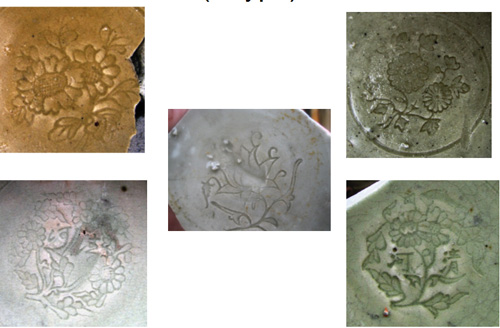
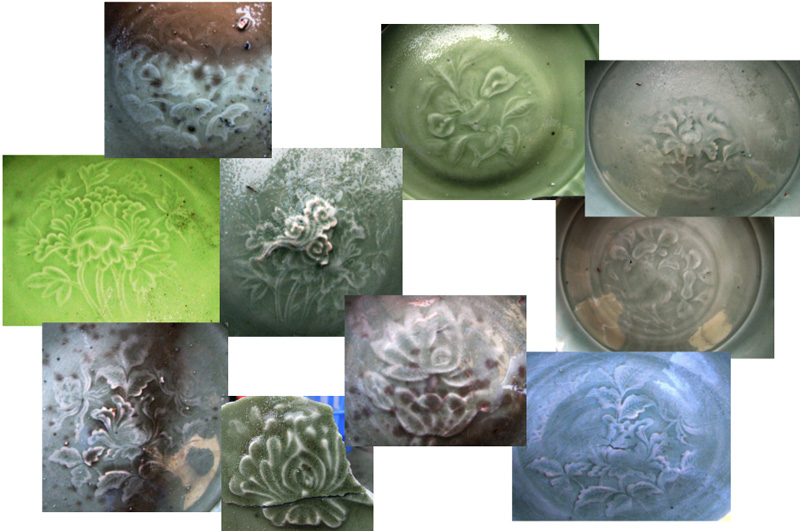
Some examples of
impressed floral motif
Some examples of embossed floral motif
Small Longquan
jarlets, some plain and others with embossed floral motif
Bo-shaped Longquan celadon bowls
Fujian Wares
The wreck contained many brown-glazed basins and jars, likely produced at Fujian's Cizao kilns. Some rough white and Qingbai bowls and plates, probably from Fujian, were also found.
Fujian wares were rougher in quality compared to Longquan and Jingdezhen ceramics but had a niche market due to their affordability. Given Quanzhou’s prominence as a major export port during the Yuan period, Fujian coastal kilns had a competitive advantage due to their proximity.
Examples of Fujian ceramics found:
- Brown-glazed jars with carved floral motifs
- Qingbai dishes with twin-fish motifs
- Rough white-glazed bowls likely from Fujian kilns
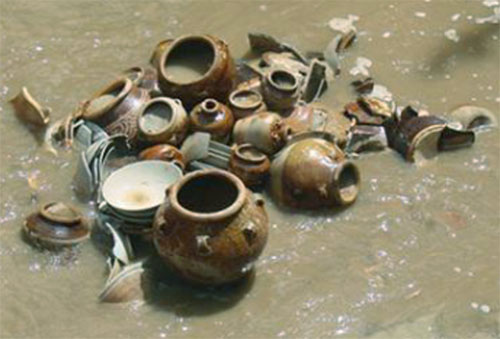 |
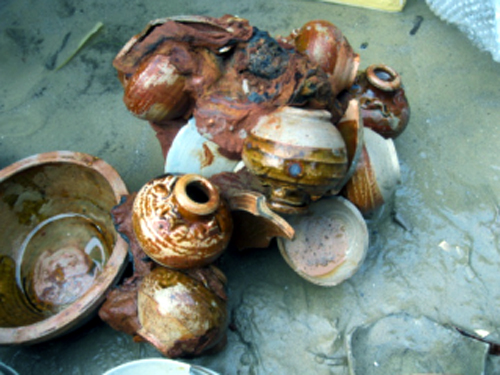 |
|
|
|
|
| Examples of Fujian Cizao kiln brown glaze jars/jarlets and Basins |
|
|
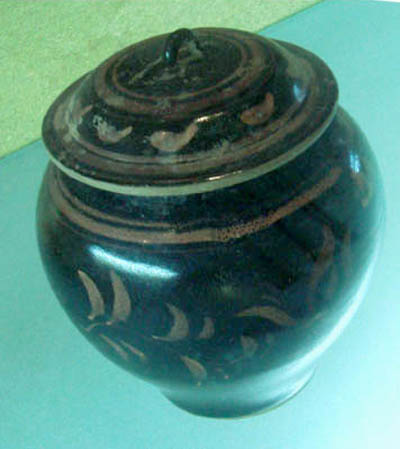 |
| Brown glaze jar with carved floral motif recovered from the wreck Similar example from the Cizao kiln in Quanzhou Museum (Right) |
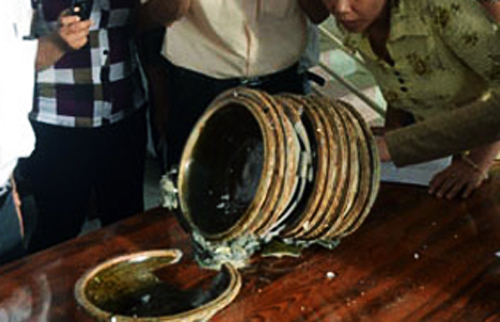 |
| Fujian Cizao kiln brown glaze basins |
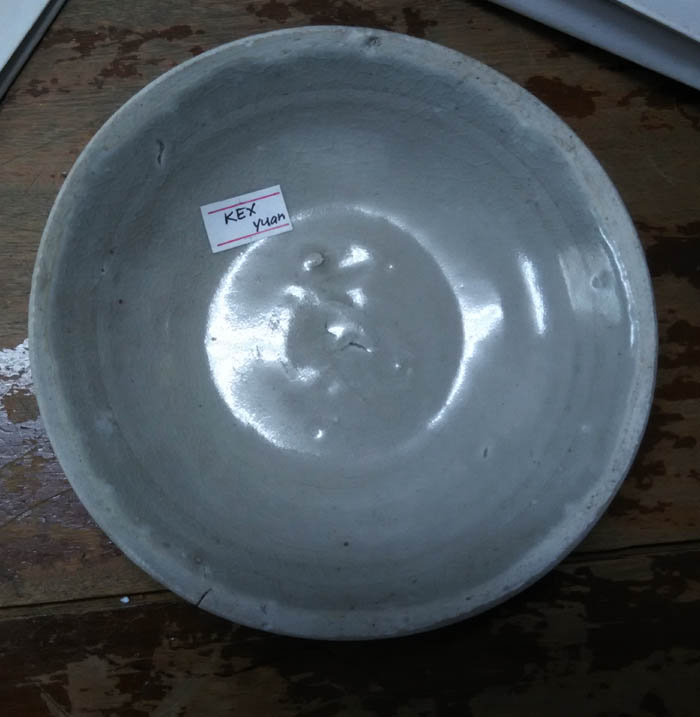 |
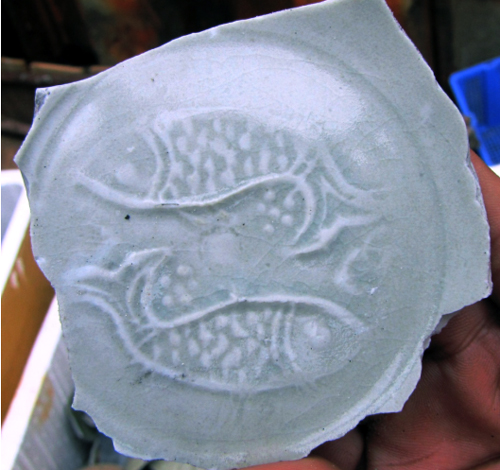 |
| Fujian kiln Qingbai dish with impressed twin fish motif |
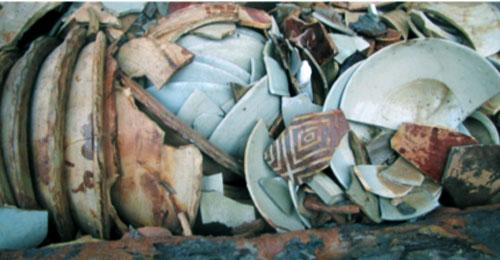 |
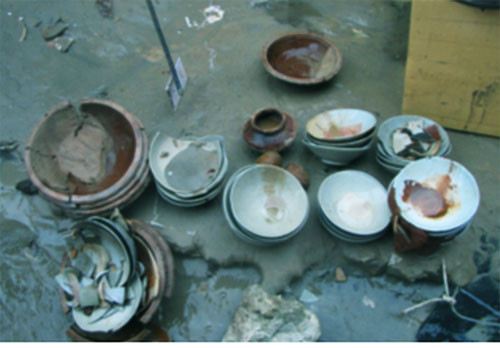 |
| Rough white glaze/Qingbai bowls and brown-glazed basins from Fujian kilns |
Blue-and-White and Qingbai Wares
Small blue-and-white ewers, cups, jarlets, and dishes were also found. These wares were absent from the Sinan wreck (dated to 1323), suggesting they were not yet in production at that time.
| |
|
|
|
|
|
|
|
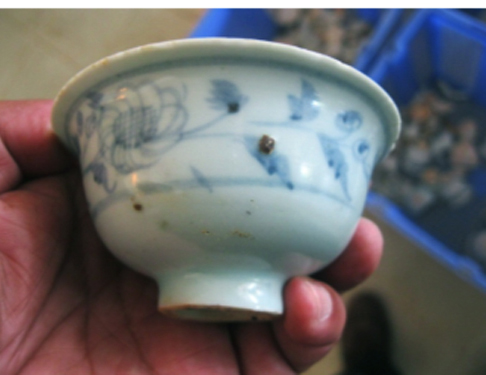 |
|
| |
|
|
|
|
| Examples of blue and white and iron-spotted Qingbai wares recovered from the wreck | |
Comparison of Longquan wares to Shengbei Islet Wreck
The Zhangzhou Shengbei Islet shipwreck lies approximately 82 kilometers north of Zhangzhou City and 65 kilometers south of Nan’ao Island in Shantou, Guangdong Province. This area was a vital maritime corridor for ancient north-south navigation, but its complex underwater topography—filled with hidden reefs—made it prone to maritime disasters.
The Shengbei wreck was discovered in 2011 after illegal looting activities. From 2013 to 2014, the Fujian Museum, in collaboration with Zhangzhou cultural heritage authorities, conducted an underwater archaeological survey, confirming the shipwreck’s location and cataloging confiscated artifacts.
An analysis of the Shengbei wreck's recovered artifacts reveals that all ceramics were Longquan celadon, including bowls, plates, dishes, lids, alms bowls, basins, stemmed cups, and incense burners. Bowls and plates dominated the assemblage. The ceramics exhibited mass-production characteristics, such as deformities, adhesion, underfiring, and simplistic or repetitive decorations (primarily stamped patterns rather than intricate carvings).
Both wrecks likely date to the same period, as indicated by the similarities in vessel forms and decorations. Therefore, the Binh Chau wreck provides valuable comparative data for refining the dating of the Shengbei wreck to the 1330s–1350s.
 |
 |
 |
 |
| Longquan celadon vessels from the Shengbei Wreck. The vessel forms and decorations share much similarities to those from BInh Chau Wreck. |
Comparison of Longquan wares to Dalian Island Wreck
The shipwreck is located in the waters between Dalian Island and Xiaolian Island in the Haitan Strait, Pingtan County, Fujian Province. The seabed consists of reefs and sand, with a water depth of 15–18 meters. In 2007, the Underwater Archaeology Research Center of the National Museum of China, the Fujian Museum Institute of Archaeology, and the Fuzhou Cultural Relics and Archaeology Team jointly conducted an excavation.
The shipwreck remains are severely damaged, with only the bottom part of the hull preserved. The artifacts are scattered over an area of approximately 400 square meters. The remaining hull is about 7 meters long and 5.5 meters wide, with six preserved bulkheads, spaced about 1 meter apart.
The recovered artifacts mainly include celadon plates, water basins, small jars, and bowls, all produced at the Longquan kilns. Plates are the most common type, with the highest quantity. The decoration methods include carved patterns, stamped designs, and applied motifs, featuring designs such as cloud dragons, floral patterns, aquatic birds, twin fish, and human figures.
A relatively large number of small jars were also found, classified into two types: those with handles and those without. These jars were made in two separate molds for the upper and lower halves, which were then joined together. The exterior walls of the jars are plain, with some featuring stamped floral and dragon patterns.
Additionally, a small number of black-glazed four-handled jars, iron pots, and bronze coins were discovered. The Longquan celadon wares recovered from the Yuan Dynasty shipwreck at Dalian Island mostly belong to the "Phase 3, Levels 6 and 7" classification of Longquan kilns, dating approximately to the late Yuan Dynasty.
 |
 |
 |
 |
 |
 |
 |
| Longquan celadon wares from the Dalian Island wreck |
Conclusion
The Binh Chau wreck provides significant insights into Yuan-era maritime trade and ceramic production. The ship’s cargo indicates that Longquan celadon dominated the export market, with Fujian wares serving as a more affordable alternative. The discovery of early blue-and-white ceramics further refines the chronology of such wares, reinforcing the wreck’s dating to the 1330s–1350s. Additionally, comparisons with the Shengbei Islet and Dalian Island wreck suggest a similar timeframe, highlighting the mass production and trade patterns of the late Yuan period. The Binh Chau wreck remains a crucial archaeological find, shedding light on trade routes, ceramic distribution, and shipbuilding techniques of the time.
Written by: NK Koh (9 Aug 2015), Updated: 6 Mar 2025